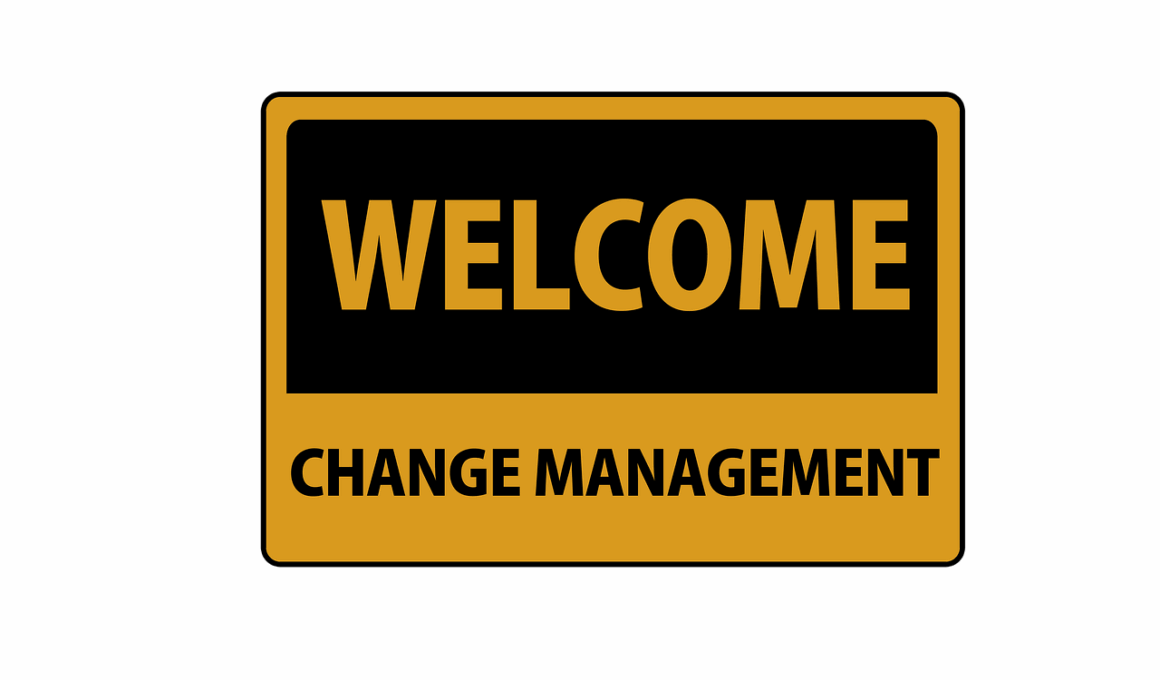Aligning Cost Reduction Goals With Organizational Change Objectives
Effective change management is crucial for successful cost reduction initiatives, ensuring that objectives align with organizational goals. By understanding both the cultural and operational dynamics, organizations can effectively implement cost-cutting measures that do not compromise productivity or employee morale. Change management involves a systematic approach that addresses various aspects, such as communication, stakeholder engagement, and training. Engaging employees in the process creates a sense of ownership, encouraging their commitment to new cost-reduction strategies. Utilizing change management frameworks like Kotter’s 8-Step Process can help businesses streamline their transition. Additionally, creating a detailed plan that outlines the specific cost reduction goals, timelines, and responsibilities is essential for keeping the initiative on track. Building a supportive environment where employees feel safe to express concerns or suggestions can further facilitate smoother transitions. By aligning change management with cost-reduction objectives, organizations can minimize resistance while fostering innovation. This multifaceted approach enhances overall operational efficiency, ultimately leading to improved financial performance and growth while maintaining employee satisfaction.
Assessing Cultural Fit for Change Initiatives
The success of cost reduction initiatives heavily depends on the organizational culture. Assessing the cultural readiness of the organization helps pinpoint potential areas of resistance and opportunities for alignment. Organizations must evaluate their existing cultural values against the intended changes. This alignment ensures buy-in from employees, which is crucial for minimizing disruption during implementation. Understanding subcultures within the organization, such as departments with varying levels of comfort with change, can tailor the approach to meet specific needs. Workshops and feedback sessions can serve as effective platforms to gauge sentiments towards proposed changes. Leaders should employ transparent communication strategies to articulate the reasons behind cost reduction initiatives. Highlighting both short-term benefits and long-term gains cultivates trust among employees. Additionally, organizations must recognize that financial gains from cost reductions may not be immediate. Setting realistic expectations allows employees to embrace the process rather than resist it. Training programs that equip employees with the skills needed for new operational practices can significantly aid in smoother transitions and promote acceptance within the organizational framework.
Implementing efficient change management strategies requires a comprehensive understanding of the impact on current processes and workflows. As organizations embark on cost reduction journeys, they must meticulously evaluate existing operations, seeking opportunities for streamlining. Conducting thorough process audits can expose inefficiencies that lead to unnecessary costs. With a clear picture of existing workflows, organizations can identify areas for improvement without jeopardizing productivity. Engaging team members in this audit process fosters a collaborative atmosphere and encourages innovative ideas. Furthermore, implementing pilot programs for proposed changes allows organizations to gauge the effectiveness of new strategies before full-scale rollout. Feedback mechanisms should be established to collect insights on these pilot tests, and adaptations can be made accordingly. Creating an agile environment where adjustments are welcomed can enhance the overall effectiveness of cost reduction measures. It’s essential to maintain clear documentation throughout the change process, serving as a reference for what worked and what didn’t. This systematic communication aids in maintaining alignment between organizational objectives and the practical aspects of implementing cost-effective changes.
Measuring Success and Ongoing Adjustments
Successful change management in cost reduction initiatives necessitates the establishment of metrics for evaluation and ongoing assessment. Organizations must define what success looks like, encompassing both quantitative and qualitative performance indicators. Key metrics include cost savings achieved, employee engagement levels, productivity rates, and feedback scores. Regularly tracking these indicators can provide invaluable insights into the effectiveness of implemented strategies. It’s equally important to be open to adjustments based on these insights; a rigid approach may lead to missed opportunities for further optimization. Organizations that champion a culture of continuous improvement not only adapt to change but also proactively innovate. Holding regular review sessions involving stakeholders can invigorate the change process, allowing teams to celebrate accomplishments and address challenges collectively. Gathering insights from front-line employees can reveal front-on issues and areas needing refinement. By creating a feedback loop that encourages open dialogue, organizations can perpetuate an environment where change is viewed positively. Leveraging technology and data analytics can support these dialogues, making it achievable to visualize progress and make informed decisions surrounding ongoing changes throughout the cost reduction cycle.
Stakeholder engagement plays a pivotal role in the success of change management for cost reduction strategies. Identifying key stakeholders and understanding their influence and interests can inform strategic planning. Leaders should prioritize communication with stakeholders, actively soliciting their input and addressing concerns early in the process. Establishing a change management team that includes representatives from various levels within the organization can foster a sense of unity. This representation ensures that diverse perspectives are considered, enhancing the adaptability of cost reduction initiatives. Moreover, empowering stakeholders during planning and implementation can cultivate greater alignment and support. Regular updates regarding progress, challenges, and successes keep stakeholders informed and engaged. Transparency surrounding decision-making fosters trust, mitigating potential pushback against necessary changes. This collaborative environment can lead to innovative solutions that enhance cost-effective outcomes. Celebrating small wins can also reinforce commitment among stakeholders, further driving the initiatives forward. As change processes evolve, sustaining engagement through continuous dialogue remains essential for maintaining momentum despite challenges and resistance that may arise throughout the course of the cost reduction journey.
Training and Development for a Seamless Transition
Developing a robust training and development program is crucial for facilitating a seamless transition as organizations embark on cost reduction initiatives. Employees need to be equipped with the right skills and knowledge to adapt to new processes and technologies introduced during change efforts. Tailored training sessions can address specific gaps identified during process audits, ensuring that every team member feels confident in their role amidst the transition. Incorporating various training methodologies, such as e-learning modules, workshops, and hands-on experiences, can cater to different learning preferences. Additionally, leveraging peer mentoring can foster a supportive learning environment where experienced employees guide their colleagues through the adaptation process. Evaluation mechanisms should be in place to assess the effectiveness of training programs, allowing adjustments based on feedback. Developing leadership capabilities within the organization is equally important, as strong leaders can facilitate the change process. By championing cost reduction efforts and embodying desired behaviors, leaders can inspire their teams to embrace new approaches. Overall, focusing on training enhances employee confidence, reduces resistance, and supports the successful implementation of cost reduction initiatives.
Lastly, fostering a culture of adaptability is essential for organizations aiming to align cost reduction goals with change management objectives. Organizations must cultivate a mindset that embraces change as a constant element of business operations. Encouraging innovation and flexibility enables employees to proactively seek opportunities for improvement. Highlighting success stories stemming from previous cost reduction initiatives can serve as inspiration for future endeavors, instilling confidence in employees. Regular communication channel updates regarding ongoing changes can keep everyone informed and engaged in the transformational journey. Creating forums for employees to share insights and propose improvements fosters a collaborative atmosphere where everyone feels their contributions matter. Leadership must also exemplify adaptability by demonstrating their own willingness to embrace changes. Establishing a reward system for innovative ideas or successful adaptations encourages employees to actively engage in the process. The more employees feel valued in their contributions, the more they will commit to the organization’s objectives. In conclusion, harmonious alignment between cost reduction efforts and change management leads to sustainable growth and competitive advantage, ensuring the long-term viability of the organization in an ever-evolving market.


